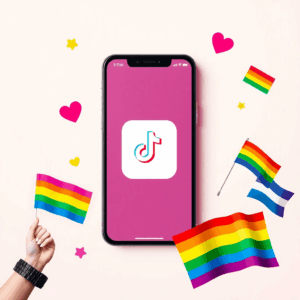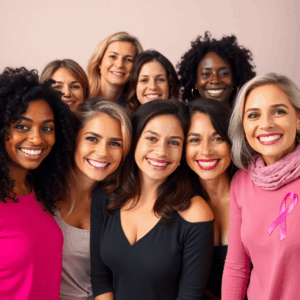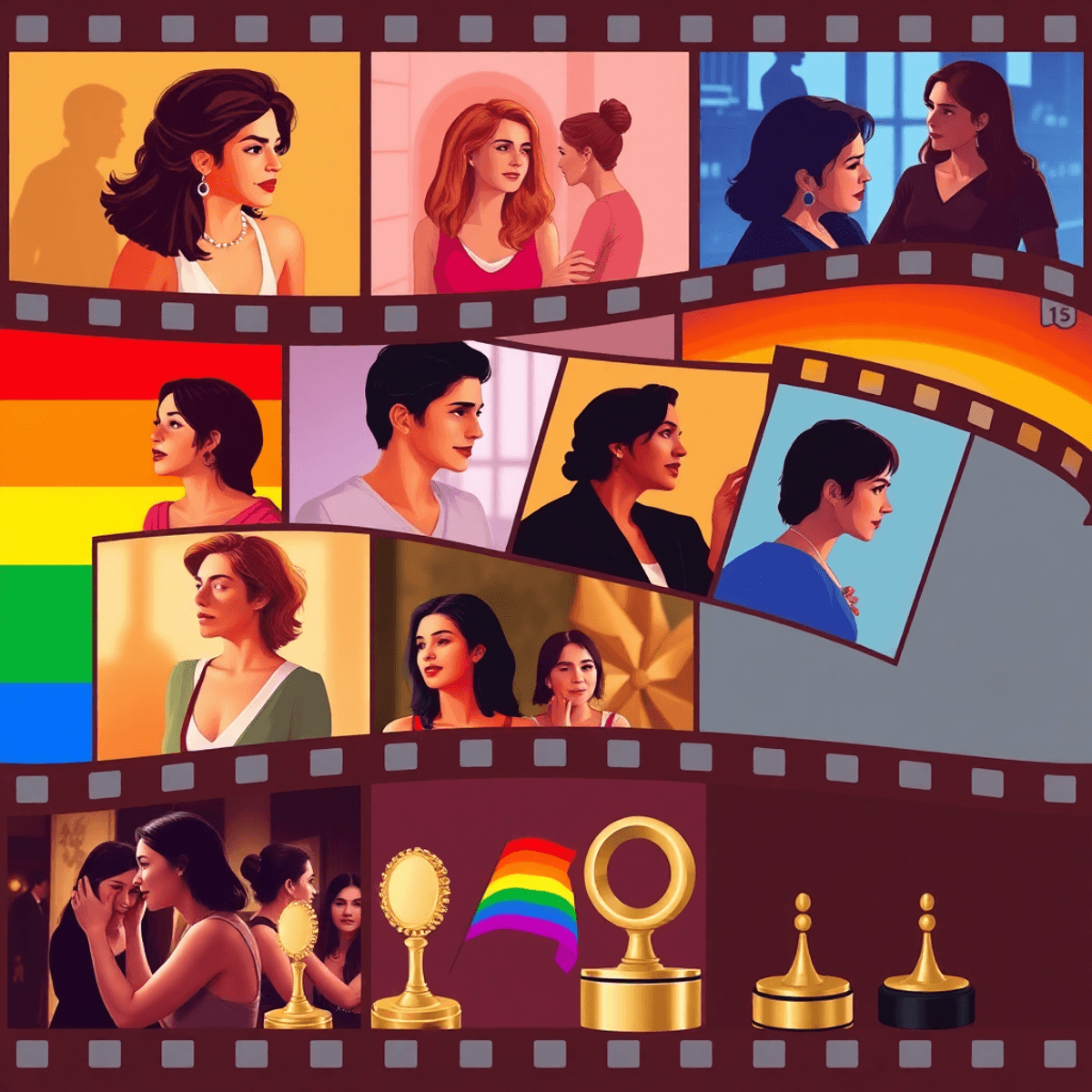Introduction
Lesbian representation in film has become increasingly important, reflecting society’s shift towards inclusivity and diversity. How are lesbian women typically portrayed in film? This question highlights the ongoing challenges and evolution within the cinematic landscape. Historically, lesbian characters have been underrepresented, often relegated to supporting roles or used as plot devices rather than fully developed individuals.
Despite progress in recent years, with some films striving to portray lesbian characters authentically, many stereotypes and limitations persist. These portrayals frequently fall into familiar tropes—sexualization, objectification, or narratives that center around male perspectives. This limits the depth and breadth of representation available to audiences and fails to capture the full spectrum of queer women’s experiences.
Key Takeaway: While strides have been made in depicting lesbian characters on screen, there remains a critical need for more diverse and accurate representations that break free from traditional stereotypes. This ongoing journey is vital for enhancing LGBTQ+ visibility and understanding in film.
Historical Context of Lesbian Representation in Film
The portrayal of lesbian characters in film has a long and complex history that reflects societal attitudes and prejudices.
Early Depictions: Sensationalism and Vilification
Early depictions often relied on sensationalism or vilification, casting queer women as either tragic figures or antagonists. Films like The Children’s Hour (1961) highlighted the stigma attached to lesbian relationships, portraying them as scandalous and shameful. This approach not only marginalized queer women but also reinforced discriminatory stereotypes within mainstream cinema.
Evolving Representations: Nuance and Authenticity
As the film industry evolved, so did the representation of LGBTQ+ characters. The 1970s and 1980s saw a gradual shift, with more nuanced portrayals emerging. Yet, these films often remained confined to the fringes of cinema—art house productions rather than mainstream releases.
A turning point arrived in the 1990s with films like Go Fish (1994) and Bound (1996), which presented lesbian characters with greater authenticity and complexity. These milestones marked a departure from previous depictions, offering audiences a glimpse into the diverse experiences of queer women.
Recent Advances: Acclaim and Authentic Storytelling
Entering the 21st century, film history continued to witness significant strides in representation. Titles such as Carol (2015) and Portrait of a Lady on Fire (2019) have received acclaim for their authentic storytelling and avoidance of reductive stereotypes.
However, despite these advancements, lesbian representation in mainstream cinema still grapples with challenges related to visibility and diversity.
Significance of Historical Context
Understanding this historical context is crucial for unpacking current portrayals of lesbian characters on screen, setting the stage for ongoing discussions about representation and inclusivity in film today. These discussions are not limited to the realm of cinema; they extend into various aspects of society, including dating and personal relationships.
For instance, platforms like Taimi, which is recognized as one of the best lesbian dating apps available, reflect a growing acceptance and normalization of lesbian relationships in modern society.
Current Landscape of Lesbian Representation
Recent statistics reveal a persistent disparity in LGBTQ+ character visibility within mainstream films. While there has been progress, the representation of [lesbian characters](https://taimi.com/wiki/lesbian/) still lags behind their gay male counterparts. For example, studies from recent years show that a significant portion of LGBTQ+ inclusive films predominantly feature gay men, with lesbian women receiving less screen time and narrative focus.
Key Findings:
- A report from 2016 illustrated that only 34.8% of LGBTQ+ characters in films were lesbians. This highlights the ongoing challenge of equal representation.
- The limited portrayal of lesbian characters often confines them to specific genres or narratives, such as period dramas or biopics, rather than featuring them in diverse roles across different film styles.
The visibility of lesbian characters is not just about numbers; it also involves the complexity and authenticity of their stories. Many films opt for surface-level inclusion without delving into the richness of queer women’s lives. This trend underscores the need for more nuanced portrayals and an expansion beyond traditional stereotypes.
Understanding these dynamics is crucial in addressing the gaps and fostering a cinematic environment where lesbian narratives are visible, varied, and valued.
Common Tropes and Stereotypes in Lesbian Portrayals
Lesbian characters in film are often subject to a limited set of recurring tropes and stereotypes. These portrayals frequently lean into sexualization and objectification, reducing complex identities to simplistic narratives that cater more to a heterosexual audience than providing authentic representation.
1. Sexualization and Objectification
Lesbian characters are often depicted through the lens of the male gaze, emphasizing physical attraction and sexual encounters. This can overshadow their emotional depth, individuality, and the reality of their romantic relationships.
2. Limited Narratives
Storylines commonly stick to themes of experimentation or coming out, rarely exploring beyond these initial stages. Films might depict lesbian relationships as temporary or experimental phases, undermining their legitimacy.
These tropes have significant impacts on how audiences perceive lesbian women. They contribute to misunderstandings about queer women’s experiences, reinforcing stereotypes rather than challenging them. The portrayal of lesbian relationships as either overly eroticized or transient can perpetuate harmful misconceptions, limiting societal understanding and acceptance of diverse queer identities.
Challenging these tropes is essential for fostering a more inclusive cinematic landscape that reflects the varied realities of lesbian lives without resorting to outdated stereotypes.
Notable Films Featuring Lesbian Characters
A range of films have made notable contributions to the portrayal of lesbian characters, each leaving a distinct mark on audiences and cultural narratives. These films offer both positive and negative representations, shaping perceptions of lesbian lives in diverse ways.
Positive Examples:
-
“Carol” (2015): Celebrated for its authentic depiction of a lesbian romance set in the 1950s. The film emphasizes emotional depth and complexity, steering clear of cliched narratives.
-
“Portrait of a Lady on Fire” (2019): Lauded for its nuanced portrayal of love between two women, offering a refreshing focus on female desire from a female gaze perspective.
Negative Examples:
-
“Blue Is the Warmest Color” (2013): Despite critical acclaim, it faced backlash for its explicit scenes directed through a male gaze, raising questions about authenticity in portraying lesbian intimacy.
-
“The Kids Are All Right” (2010): While it brought lesbian family life into mainstream view, some critiques point to its reliance on heteronormative dynamics that overshadowed authentic queer experiences.
These examples highlight the varying degrees of success in representing lesbian stories. While some films offer progressive narratives that enrich cultural understanding, others perpetuate stereotypes or fail to capture genuine experiences. The ongoing dialogue around these portrayals underscores the need for more diverse and authentic narratives in cinema.
The Call for Diverse Representations
In the world of film, diverse storytelling plays a crucial role in shaping perceptions and understanding the complexity of human experiences. For queer women, this means moving beyond the narrow confines of prevailing stereotypes to showcase authentic portrayals of their lives. Lesbian characters have often been depicted through limited and sometimes reductive lenses, which fail to capture the full spectrum of their identities and stories.
Key Reasons for Diverse Narratives:
-
Authenticity: Genuine representation allows lesbian characters to be seen as multi-dimensional individuals, with unique stories that resonate on a personal level.
-
Visibility: Films that depict varied experiences contribute to greater visibility for queer women, challenging stereotypes and expanding audience understanding.
-
Empowerment: By telling diverse stories, filmmakers empower queer women by validating their experiences and providing role models that reflect their realities.
Films like Portrait of a Lady on Fire and Carol have begun to break away from traditional narratives, offering more nuanced depictions of lesbian relationships. These films highlight the need for continued efforts towards diverse storytelling in cinema. When filmmakers embrace a broader range of narratives, such as telling queer love stories with happy endings – a form of resistance against the norm – they help foster an environment where all individuals can see themselves represented in meaningful ways onscreen.
Future Directions for Lesbian Representation in Film
The portrayal of lesbian women in film is about to undergo a significant transformation. This change is primarily driven by the emergence of independent filmmakers and digital platforms.
These avenues offer opportunities for stories that challenge traditional stereotypes and provide a more nuanced representation of queer women’s lives.
Independent Filmmakers:
- Creative Freedom: Independent filmmakers often have the liberty to explore complex characters without the constraints of mainstream studio demands.
- Authenticity: There is an increasing emphasis on authenticity, allowing for stories that resonate more genuinely with queer audiences.
Digital Platforms:
- Increased Accessibility: Streaming services like Netflix and Amazon Prime are making it easier for diverse voices to be heard.
- Global Reach: Digital platforms can amplify stories worldwide, connecting audiences with varied experiences and perspectives.
The intersection of technology and storytelling holds promise for enriching the narrative landscape. By moving beyond conventional portrayals, these emerging avenues encourage a broader spectrum of representations, paving the way for more inclusive and authentic reflections of lesbian experiences in film.
This shift towards diversity not only enriches cinematic expression but also fosters a deeper understanding of queer identities among audiences worldwide.
Conclusion
The exploration of how lesbian women are typically portrayed in film reveals persistent challenges. Despite progress, the representation of lesbian characters often remains limited and stereotyped. This underscores the importance of representation that truly reflects diverse realities and experiences.
Ongoing challenges include:
- Stereotypical portrayals: Lesbian characters frequently face sexualization and objectification.
- Limited narratives: Many films fail to explore the full richness of queer women’s lives.
- Visibility issues: Lesbian characters are still underrepresented compared to their male counterparts.
Advocacy for accurate and diverse representations is essential. It is not only about increasing numbers but also about ensuring these portrayals resonate authentically with audiences. Continued effort can lead to a cinematic landscape where lesbian stories are told with depth, complexity, and respect.
FAQs (Frequently Asked Questions)
What is the historical context of lesbian representation in film?
Early portrayals of lesbian characters in film significantly impacted societal perceptions. Over the decades, LGBTQ+ representation has evolved, with key milestones marking progress for lesbian women in mainstream cinema.
How does the current landscape of lesbian representation compare to gay male representation?
Recent statistics indicate a disparity between gay male and lesbian female portrayals in mainstream films. An analysis reveals that while there are films featuring lesbian characters, their overall visibility remains limited compared to their male counterparts.
What are some common tropes and stereotypes associated with lesbian portrayals in film?
Recurring tropes in films with lesbian characters often include sexualization, objectification, and limited narratives. These stereotypes can significantly impact audience perceptions and understanding of queer women’s experiences.
Can you name some notable films featuring lesbian characters?
There are both positive and negative examples of lesbian representation in popular films. A brief analysis of these films can reveal their cultural impact and how they contribute to or challenge existing stereotypes.
Why is there a call for diverse representations of queer women in film?
Showcasing diverse narratives that go beyond stereotypes is crucial for offering authentic portrayals of queer women’s lives. This diversity helps to foster a better understanding and acceptance within society.
What are the future directions for lesbian representation in film?
Predictions for the future landscape suggest that independent filmmakers and digital platforms will play a significant role in fostering diversity. There is hope for more nuanced and varied portrayals of lesbian women as advocacy continues for accurate representation.
Written by
Joshua Gonzales
You may also interested in:

What does the Bible say about lesbian women?
Explore what the Bible says about lesbian women, focusing on scripture, context, and distinctions between attraction and behavior.
Why are straight women obsessed with lesbian TikTok?
Explore why straight women are drawn to lesbian TikTok, from curiosity and identity to authentic connections and community support.
